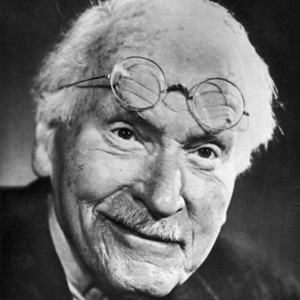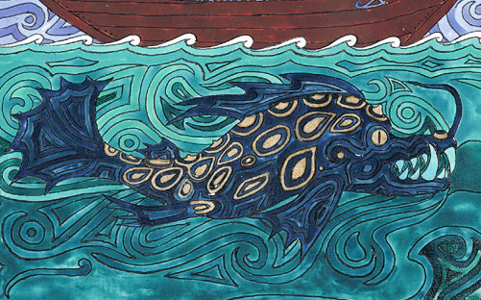CARL JUNG (1875, 1961)
Swiss Psychoanalyst, Author and Artist


At Gottingen, Horst studied numerous subjects, but listed Psychology first. We don’t know if he encountered Jung’s work there, or later; however, his initial interest in psychology evolved into a life long study of Jung’s work.
In the early 1960’s Horst read Jung’s autobiography: Memories, Dream, Reflections, and shortly after Man and his Symbols, a compendium of symbolism from different cultures and eras edited by Jung. Jung’s collected works were also published in a multi-volume set, and Horst read several of those including Dreams, Collective Unconscious, and Synchronicity.
Jung’s methods of psychoanalysis provided a guide for Horst's life and art. Jung’s ideas of Persona, Individuation and especially Art Therapy, where art is used to alleviate feelings of trauma or anxiety and hopefully heal and restore the individual. These were critical for Horst to cope with the trauma of the his war experiences. Indeed, Horst’s entire artistic career can be seen as self-guided Jungian Art Therapy.
Jung’s exploration of spiritual traditions inspired Horst to explore spirituality and religion himself. So as healing gave way to growth, Horst read extensively on religions including Islam, Christianity, Judaism, Zoroasterism, Hinduism, Buddhism among others. But he also explored subjects such as Alchemy, and Gnosticism Taoism and the I Ching which came directly from Jung's writings. Jung also wrote about Shamanism, and Horst read (and experimented with) Carlos Castaneda’s description of Mexican Shamanism. There were many other influences like Alan Watts, the bay area author of books on Zen Buddhism.
Although this was important to Horst's' Personal development, it was all ultimately in service of his art. One of Jung’s most powerful ideas is the Collective Unconscious. It presumes that all human beings share ingrained concepts in the form of images, ideas, and prototypical experiences. These are always present in our subconscious, even if we aren’t aware of them. They appear involuntarily in art, literature and, of course, our dreams. Jung referred to these as Archetypes, and Horst deliberately incorporated Jungian archetypes into his art. But Horst was especially adept at tapping his subconscious, so they also appeared spontaneously; Horst often discovered connections after he had finished the painting.
Jung also expressed his thoughts about Nazism in one of Horst’s oft-repeated quotes: “Sentimentality is the superstructure of brutality”. For Horst this aphorism provided an essential clue to what had happened during the war. Since Horst's art was partly a psychoanalytic process, he frequently explored imagery from his childhood and youth. This quote prevented him from indulging in sentimentality or nostalgia.
From 1915 to 1930 Jung labored on an extraordinary manuscript he titled The Red Book, Liber Novus. After his professional and personal break with Freud, Jung experienced a period of introspection where he felt “menaced by a psychosis”. While many psychiatrists have described Jung’s experience as a psychosis or psychotic break, one look at the Red Book and you know it was really much closer to a profound artistic impulse.
The book was kept private by his heirs until 2000 when they agreed to publish it. The book is a kind journal or workbook and resembles the medieval manuscript "The Book of Kells" in its masterful use of calligraphy and illustration. Although Horst never saw the Red Book, many of Jung's' illustrations are astonishingly similar to Horst’s.
The painting above is Jung's Fish or Sea monster. For Jung water was symbolic of the subcosnscious and the fish or sea monster is the aspect of the persona that inhabits the subconscious. One of Horst's favorite symbols was the Fish, and he frequently said "I am always the Fish".
Horst did numerous fish paintings, here are two:
Sea Monster
Fish on Steeple